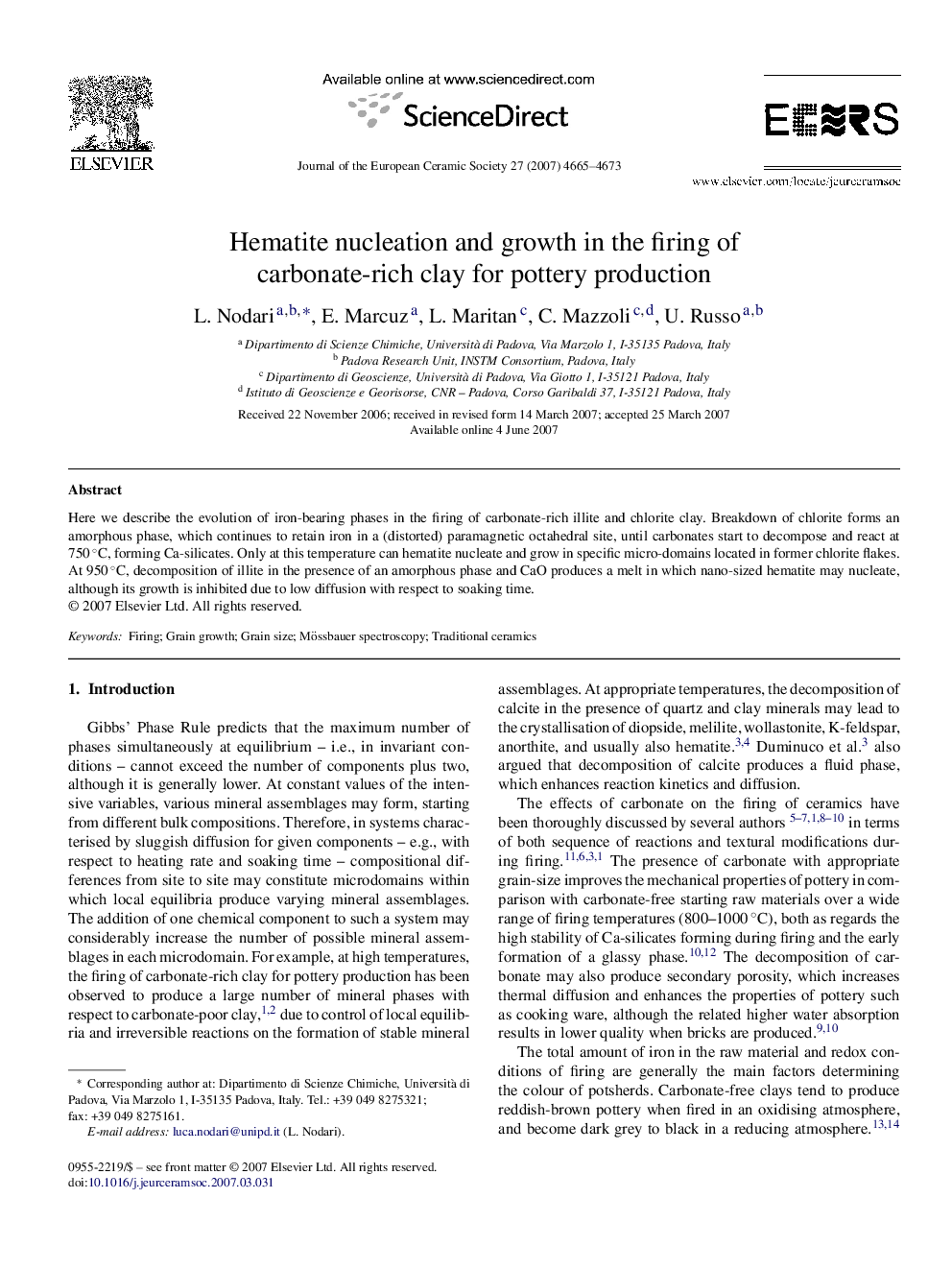| Article ID | Journal | Published Year | Pages | File Type |
|---|---|---|---|---|
| 1478127 | Journal of the European Ceramic Society | 2007 | 9 Pages |
Abstract
Here we describe the evolution of iron-bearing phases in the firing of carbonate-rich illite and chlorite clay. Breakdown of chlorite forms an amorphous phase, which continues to retain iron in a (distorted) paramagnetic octahedral site, until carbonates start to decompose and react at 750 °C, forming Ca-silicates. Only at this temperature can hematite nucleate and grow in specific micro-domains located in former chlorite flakes. At 950 °C, decomposition of illite in the presence of an amorphous phase and CaO produces a melt in which nano-sized hematite may nucleate, although its growth is inhibited due to low diffusion with respect to soaking time.
Related Topics
Physical Sciences and Engineering
Materials Science
Ceramics and Composites
Authors
L. Nodari, E. Marcuz, L. Maritan, C. Mazzoli, U. Russo,
